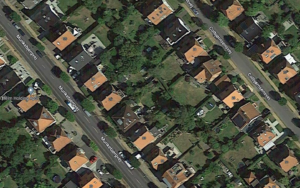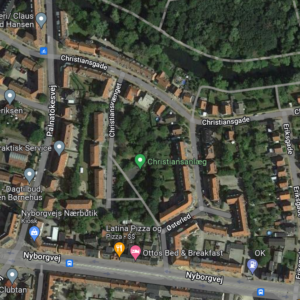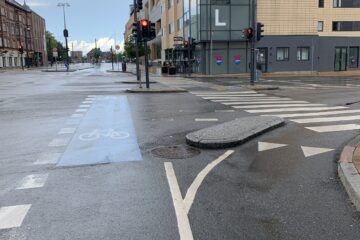Odense
Odense is a smaller community than Copenhagen, with just about 180,000 people. Pretty close to the population projected for Bend around the year 2040. We met with City Planner, Connie Juel Clausen. She has spent much of her career working on transportation planning in Odense (25 years!). She wrote their first Traffic and Mobility plan in 2009 and just wrapped up construction of its final project. Jumping right into their next plan now.
Since I didn’t know much about Odense before coming here, I’m assuming most of you don’t either – so here are some orientation facts:
- about 22 inches of rain a year
- 20 some odd days of snow a year
- can get quite hot in summer – in the 90’s but most summer days are in the 70’s and 80’s
- can get quite cold in winter – below zero F but most winter days are in the 30’s
- population about 180,000 in 2021
- 117 square miles (10,880 acres)
- density 16.5 people per acre
- about 12 miles diameter (whereas Bend has a smaller footprint 9 miles tall and 7 miles wide)
In many respects, it is a lot like Bend, particularly climate. Some areas are more dense than we are, with a larger downtown (more shops, more office buildings), but many areas are pretty similar with lots of single family homes on 4000 square foot lots (40′ x 100′ lots) – which is also Bend’s most common RS zoned lot size. They do have lots of neighborhoods that contain 3 to 4 story apartments.

4000 SF lots – very similar to Bend’s neighborhoods.

Example of an RM to RH Neighborhood in Odense, Denmark
Odense also has:
- 250 playgrounds
- 124 parks
- 2% population growth per year
We heard similar themes from Ms. Clausen as we heard in Copenhagen – the city is trying really hard to attract families and employees, and retain them by creating a highly livable city and adding amenities that serve the community. Good places to eat, shop, play and go to school and work.
Odense light rail line (just a short line now) just opened in June 2022 – so just last month.
Odense has built really supportive walking and bicycling infrastructure with:
- 341 miles of protected bike lanes/pathways
- 65 bike tunnels
- 125 bike bridges
- 12 permanent traffic counters
- 25 bike repair stations with tire air pumps
- plan for about 7 super cycle highways (more on this in a future blog post).
This has resulted in a good balance of bicycling trips:
- 23% of all trips are by bike – some areas though have just 10% bike mode share – particularly along highways (in the city center it is a bit higher).
- 75% of all students walk or bike to school.

2 Comments
Marc Schlossberg · July 6, 2022 at 4:09 pm
I love that you were able to see this smaller place and compare it to Bend, particularly how Bend could look and feel by 2040 when its population will be similar yo Odense today. And how great that you were able to engage with a local Odense planner who has been doing the work to retrofit the city. The trick will be how to expand the thinking of others on what is actually possible and make it happen before and after that ‘a-ha’ understanding. I’m appreciating all your insights on this trip!
Robin · July 6, 2022 at 6:16 pm
Marc,
You hit the main issue – one way is to share this experience with others in the community, both city employees and councilors, and ODOT staff!